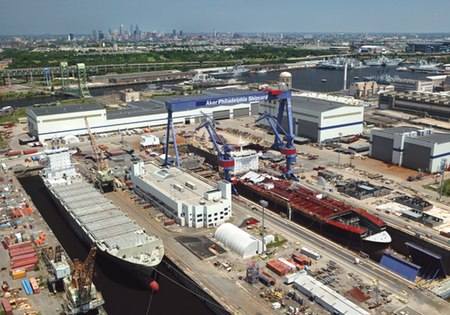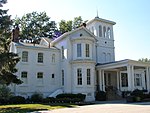Philly Shipyard
Companies listed on Oslo AxessIndustrial buildings and structures in PennsylvaniaManufacturing companies based in PhiladelphiaShipyards of the United States

Philly Shipyard, formerly Aker Philadelphia Shipyard, is a commercial shipyard located in Philadelphia, Pennsylvania, United States on part of the site of the Philadelphia Naval Shipyard. The commercial yard began after the United States Navy had ended most of its operations at the site. The yard is a listed company on the Oslo Stock Exchange and part of the Aker Group controlled by Kjell Inge Røkke. The yard targets producing ships within the Jones Act for domestic shipping, primarily product tankers and container ships.
Excerpt from the Wikipedia article Philly Shipyard (License: CC BY-SA 3.0, Authors, Images).Philly Shipyard
7th Street West, Philadelphia South Philadelphia
Geographical coordinates (GPS) Address Nearby Places Show on map
Geographical coordinates (GPS)
| Latitude | Longitude |
|---|---|
| N 39.888301 ° | E -75.187844 ° |
Address
Building 95
7th Street West
19112 Philadelphia, South Philadelphia
Pennsylvania, United States
Open on Google Maps










